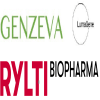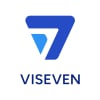Dive Brief:
- While overall drug spending growth in the U.S. slowed last year, branded prescription drug prices jumped 16.2% from 2015 and 2014, according to data from the pharmacy benefit manager Express Scripts. Since 2011, the average price of brand name drugs nearly doubled, growing by 98.2%.
- Specialty medicines like AbbVie's Humira and Amgen's Enbrel made up an even larger share of drug spending by Express Scripts members, accounting for over 37% of the overall spend.
- Falling generics prices helped moderate overall spending growth to 5.2%, roughly half the size of 2014's increase.
Dive Insight:
Express Scripts continued its aggressive attack on high price increases for branded drugs, specifically calling out Novartis' Gleevec. The PBM also voiced its concern over price hikes for generic drugs such as Horizon Pharma's Vimovo or Valeant's Glumetza.
"Several industry factors are influencing the increase in generic drug pricing [for specific drugs]. The first is consolidation among pharmaceutical manufacturers that’s driving down marketplace competition," the report said. Fewer manufacturers means greater opportunity for price increases without being undercut.
Managing PCSK9 drugs
The report also included some interesting detail on Express Scripts' view of the new PCSK9 cholesterol drugs. Both Amgen's Repatha and Sanofi/Regeneron's Praluent entered the market as an alternative to the traditional statin treatments for high cholesterol. Despite their promise, both have seen slower than expected uptake.
Both list at more than $14,000 per year. That high cost led the U.K.'s National Institute for Health and Care Excellence to preliminarily reject Sanofi's Praluent on cost-effectiveness grounds.
Express Scripts has covered both drugs but indicated they would continue to be under scrutiny in its report. "For both patient safety and payer affordability, it’s important to ensure this class of drugs is appropriately managed."
A widening gap
The Express Scripts prescription price index (shown below) highlights the widening gap between quickly increasing brand name drug prices and generic deflation. Generic products are used in 84% of filled prescriptions, according to the PBM.

Among traditional therapies, diabetes drugs had the lowest generic fill rate at roughly 53% of all prescriptions. Sanofi's Lantus and Eli Lilly's Humalog were two of the top diabetes drugs by market share.
Predictably, specialty medicines had much lower generic fill rates, although the World Health Organization's generic drug sildenafil was the most prescribed drug in the pulmonary hypertension class.














